The Vietnam Museum of Ethnology, a precious gem in the heart of Hanoi, is not only a place preserving the cultural essence of 54 ethnic groups but also a captivating tourist destination. With its unique architecture, diverse exhibition spaces, and rich experiential activities, the museum promises visitors a profound and memorable journey of discovering Vietnamese culture. Let “Du lịch khắp thế gian” (Travel Around the World) guide you through the travel experiences at the Vietnam Museum of Ethnology for a fulfilling and meaningful trip.
1. Introduction to the Vietnam Museum of Ethnology
Address: Nguyễn Văn Huyên Street, Cầu Giấy District, Hanoi.
Entrance Fees:
- Adults: 40,000 VND/person/visit
- Students: 15,000 VND/person/visit
- Pupils: 10,000 VND/person/visit
- Seniors, people with disabilities, ethnic minorities: 50% discount
- Children under 6 years old, people with severe disabilities, ICOM card holders, press card holders, sponsors: Free admission
Other Service Fees:
- Vietnamese guide (indoor/outdoor): 50,000 VND/tour
- English/French guide (indoor): 100,000 VND/tour
Opening Hours: 8:30 AM – 5:30 PM daily (may vary on holidays, Tet).
Located about 8km from the center of Hanoi, the Vietnam Museum of Ethnology is an ideal cultural destination, easily accessible for all visitors. Established in 1981 and officially opened to the public in 1997, the museum carries a noble mission to research, collect, preserve, and introduce the tangible and intangible culture of the 54 ethnic groups of Vietnam.
This unique architectural work is a harmonious combination of the ideas of architect Hà Đức Lịnh (Tày ethnic group) and French architect Véronique Dollfus, creating a space that is both modern and imbued with national identity. With a total area of 4.4 hectares, the museum not only displays artifacts but also vividly recreates the cultural life of ethnic groups through indoor and outdoor exhibition areas.
The Vietnam Museum of Ethnology is not only an attractive tourist destination but also a prestigious cultural research center, attracting the attention of many scholars, students, and culture enthusiasts both domestically and internationally. This place is truly an “encyclopedia” of Vietnamese culture, helping visitors gain a deeper understanding of the diversity and richness of Vietnam’s country and people.
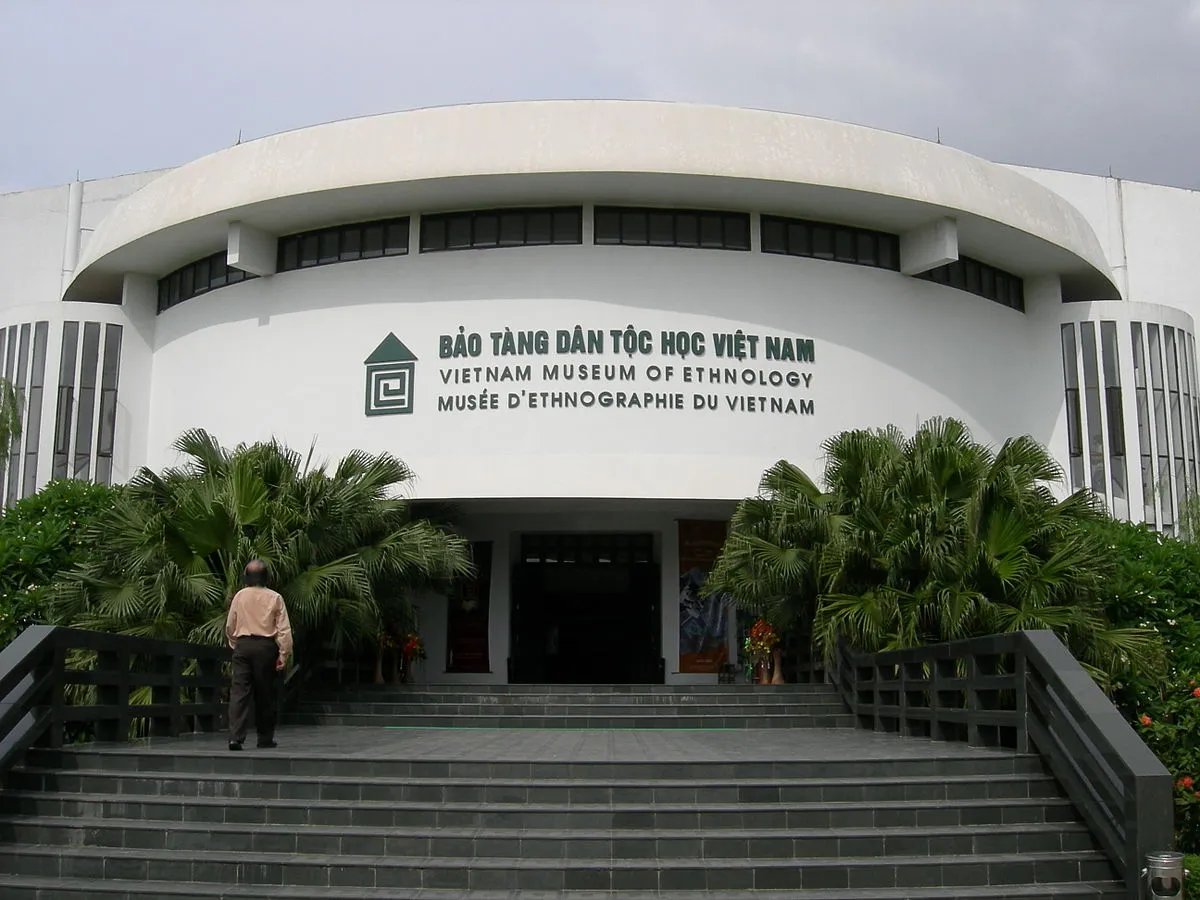
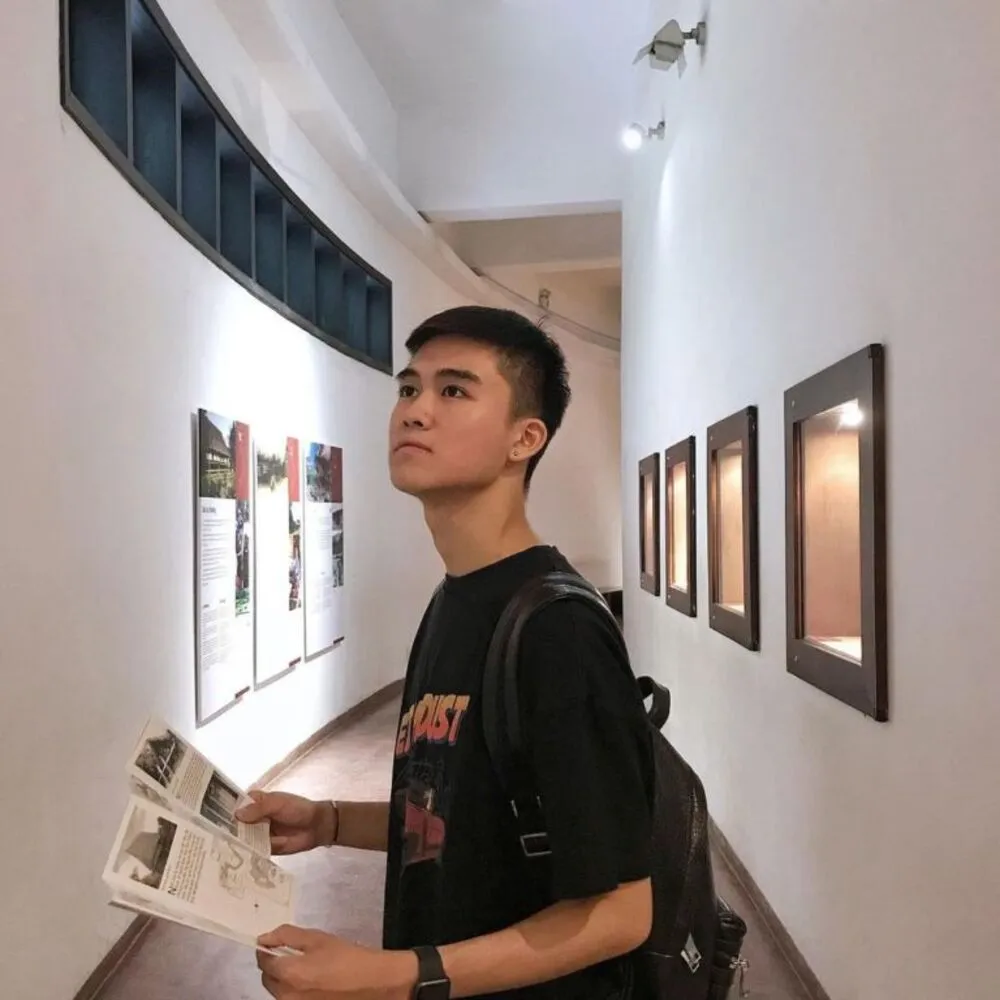
2. Unique Architecture and Diverse Exhibition Space
The Vietnam Museum of Ethnology impresses visitors from the first sight with its unique architecture, deeply imbued with national cultural imprints. The museum’s exhibition space is divided into many different areas, each offering unique exploration experiences.
2.1. Grounds and Overall Architecture
The museum grounds are spacious and green with many trees and lakes, creating a relaxed and pleasant feeling for visitors. The exhibition buildings are designed in solid, square blocks, using many natural materials such as wood, stone, and baked bricks, both close to nature and imbued with traditional Vietnamese architecture. A special highlight in the museum’s architecture is the harmonious combination of indoor and outdoor spaces, creating a close connection between exhibition areas.
2.2. Outdoor Architecture Garden
The outdoor architecture garden is the most unique and attractive space of the museum, covering 2 hectares, displaying 10 typical folk architectural works of ethnic minorities in Vietnam. Here, visitors can admire traditional houses that have been authentically restored, such as the Rong house of the Ba Na people, the long stilt house of the Ê Đê people, the tomb house of the Gia Rai people, the tiled roof house of the Dao people, the rammed earth house of the Hà Nhì people, and more. Each architectural work not only shows the characteristics of style and building materials but also reflects the cultural, social, and religious life of each ethnic group.
Walking in the architecture garden, visitors feel like they are stepping into a miniature Vietnam, witnessing and feeling the diversity in the housing architecture of ethnic groups. From the layout of the space to the decorative details, each house tells its own story, contributing to enriching the picture of Vietnamese culture.

2.3. Dong Son Drum Exhibition Area (Indoor)
The Dong Son Drum Exhibition Area is the main indoor exhibition area, consisting of 2 floors, systematically and fully introducing the culture of 54 ethnic groups in Vietnam. The 1st floor focuses on a general introduction to the community of ethnic groups, geographical distribution, language, costumes, and economic and social activities. Here, visitors can easily visualize an overview of the colorful picture of Vietnamese culture.
The 2nd floor delves into specific ethnic groups, displaying artifacts according to themes such as clothing, jewelry, tools, musical instruments, religion, beliefs, and festivals. With over 15,000 original artifacts, 42,000 photo and film documents, and thousands of hours of recordings, the Dong Son Drum Exhibition Area is truly a priceless treasure trove of knowledge about Vietnamese ethnic culture. Visitors can spend hours exploring each artifact, reading detailed captions, and discovering the cultural stories hidden behind each exhibit.
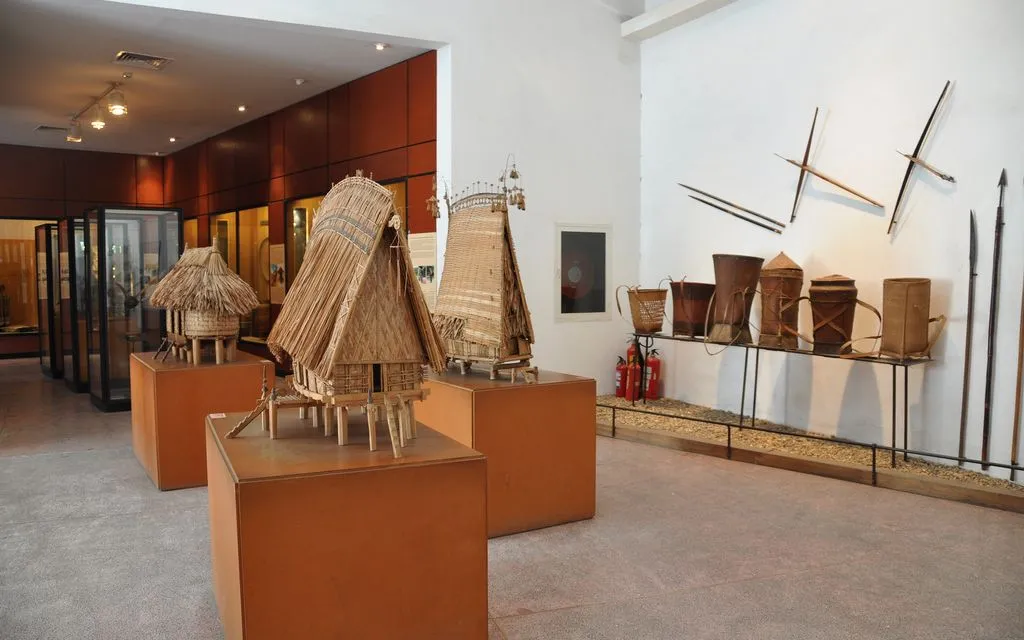
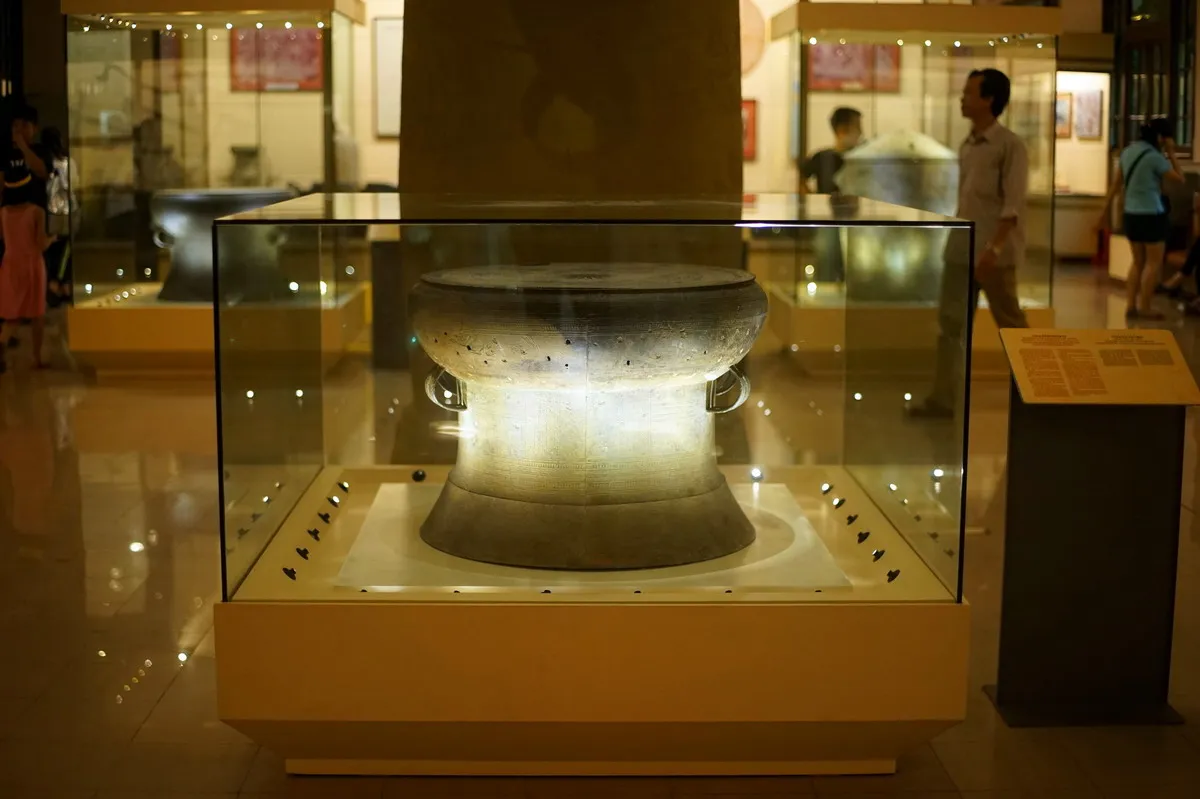

2.4. Kite Exhibition Area (Southeast Asia)
The Kite Exhibition Area is a space that broadens the view to Southeast Asia, introducing the culture of neighboring countries. Here, visitors can learn about cultural similarities and differences between Vietnam and other countries in the region, thereby gaining a more multidimensional view of regional culture. The Kite Exhibition Area is not only a place to display artifacts but also a space for cultural exchange, organizing cultural and artistic activities, contributing to enhancing understanding and connection between countries.
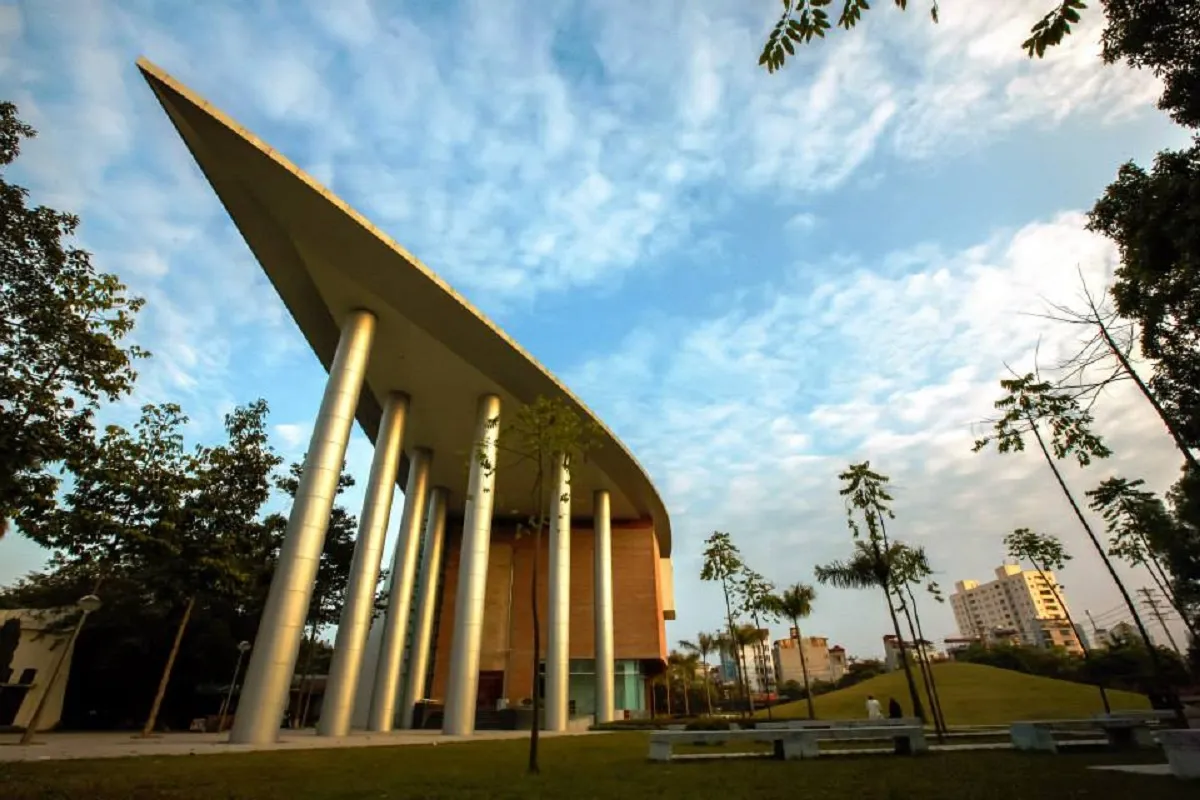
3. Cultural Experiences and Diverse Activities
Visiting the Museum of Ethnology is not just about sightseeing and viewing artifacts, but also an opportunity for visitors to experience unique cultural features through the diverse activities regularly organized at the museum.
3.1. Water Puppetry
Water puppetry is a unique traditional art form of Vietnam, preserved and developed at the Museum of Ethnology. Visitors can enjoy special water puppet performances, vividly recreating folk tales and daily life activities of Vietnamese people.
The ticket price for watching water puppetry is 90,000 VND/adult and 70,000 VND/child. Especially, if you watch water puppetry in the morning, you will get free entrance tickets, which is an attractive offer for you to experience this traditional art.

3.2. Quan Ho Folk Songs of Bac Ninh
Quan Ho folk songs of Bac Ninh, a representative intangible cultural heritage of humanity, are also introduced and performed at the museum. Visitors can enjoy the sweet and profound melodies of Quan Ho, learn about the unique Quan Ho singing customs of the Kinh Bac region. The museum regularly organizes cultural exchange sessions, creating opportunities for visitors not only to enjoy but also to participate in singing Quan Ho and interact with artisans.
3.3. Folk Games
The Museum of Ethnology is also an ideal space to experience traditional folk games of Vietnam. Visitors can participate in games such as throwing shuttlecocks, swinging, walking on monkey bridges, walking on stilts, tug of war, and more. Folk games not only bring moments of fun and relaxation but also help visitors understand more about Vietnamese culture, martial spirit, and ingenuity. In particular, folk game activities are often organized on holidays and weekends, attracting many visitors to participate.
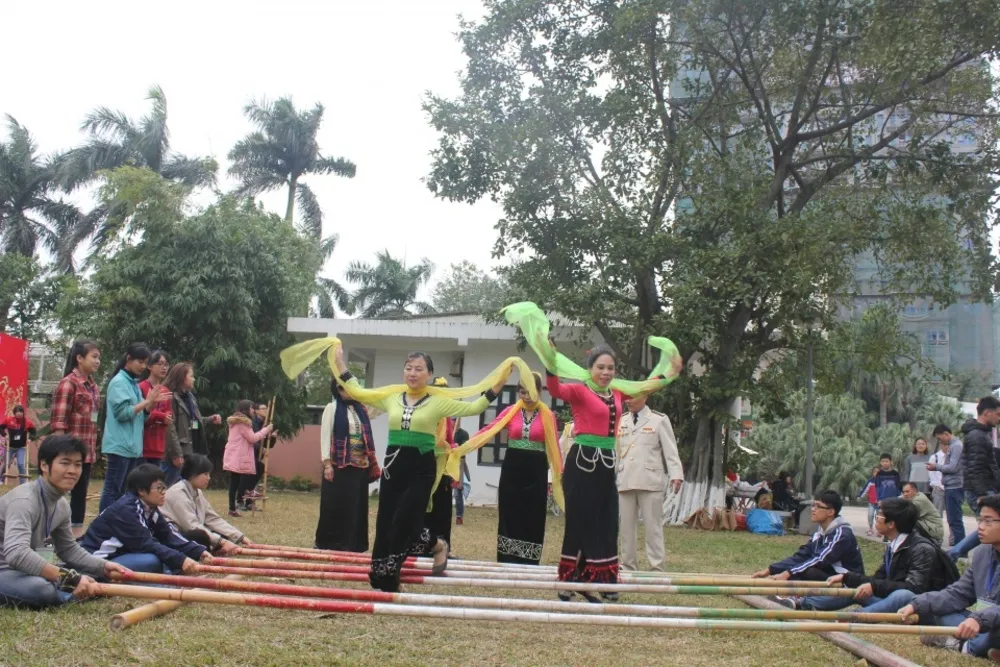
3.4. Souvenir Area
Before ending your journey to the Museum of Ethnology, do not forget to visit the museum’s souvenir area. Here, you can choose unique gifts, deeply imprinted with Vietnamese culture, to give to relatives and friends or as souvenirs for your trip. Souvenir products are very diverse, from handicrafts, traditional costumes, ethnic musical instruments, to books and pictures about Vietnamese culture.
4. Tips for a Complete Visit to the Museum of Ethnology
To make your trip to the Vietnam Museum of Ethnology more interesting and meaningful, keep these useful tips in mind:
- Visiting time: You should spend at least half a day or a full day visiting the museum, especially if you want to explore all the exhibition areas thoroughly and participate in experiential activities.
- Transportation: You can easily get to the museum by motorbike, private car, taxi, or public bus. If you take the bus, you can choose routes number 07, 14, 33, 60.
- Hire a guide: To understand more deeply about the artifacts and ethnic culture, you should hire a guide. The museum has a team of professional guides, fluent in Vietnamese, English, French, and some other languages.
- Go in small groups: To ensure the quality of your visit and easily move around the exhibition areas, you should go in small groups, not too crowded.
- Dress code: You should choose polite and comfortable clothes, suitable for the cultural space of the museum.
- Compliance with regulations: Do not bring food, drinks, flammable and explosive materials, or pets into the museum. Maintain general hygiene, do not touch artifacts, and do not make noise or cause disorder.
- Combine visiting other destinations: The Museum of Ethnology is located near many other attractive tourist destinations in Hanoi such as Thu Le Park, Vietnam National Museum of Nature, Hanoi Museum, etc. You can combine visiting the museum with these destinations to have a rich and diverse Hanoi travel itinerary.
With these travel experiences at the Museum of Ethnology above, “Du lịch khắp thế gian” (Travel Around the World) hopes you will have a truly meaningful and memorable trip. The Vietnam Museum of Ethnology is not only a place to preserve culture but also a bridge between the past, present, and future, helping us to love and be proud of the Vietnamese national cultural identity.